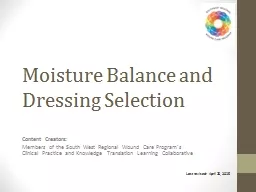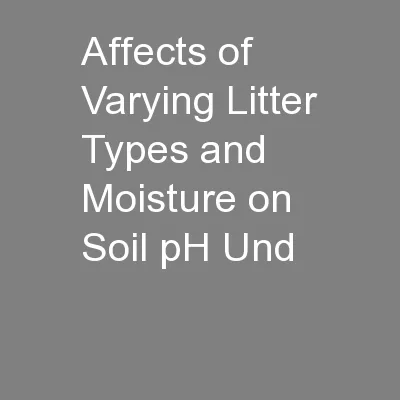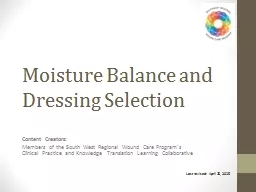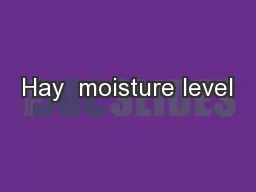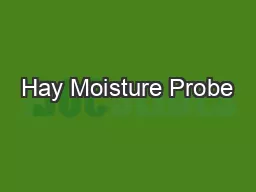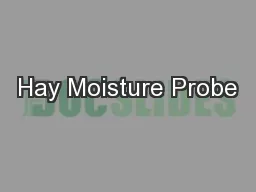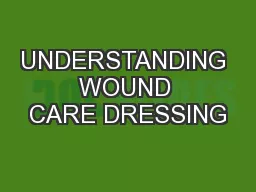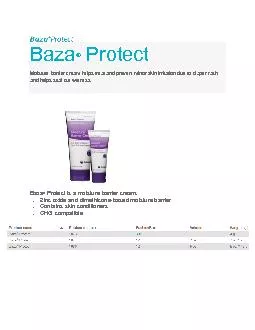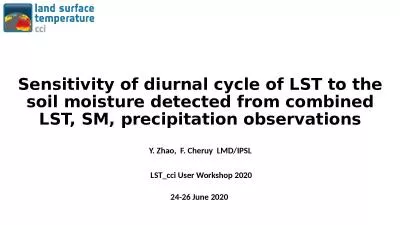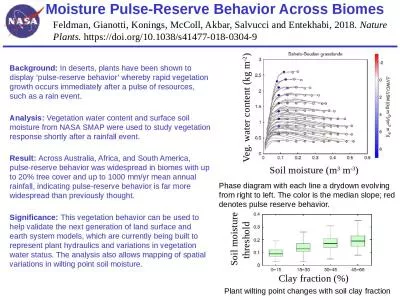PPT-Moisture Balance and Dressing Selection
Author : faustina-dinatale | Published Date : 2016-10-18
Last revised April 20 2015 Content Creators Members of the South West Regional Wound Care Programs Clinical Practice and Knowledge Translation Learning Collaborative
Presentation Embed Code
Download Presentation
Download Presentation The PPT/PDF document "Moisture Balance and Dressing Selection" is the property of its rightful owner. Permission is granted to download and print the materials on this website for personal, non-commercial use only, and to display it on your personal computer provided you do not modify the materials and that you retain all copyright notices contained in the materials. By downloading content from our website, you accept the terms of this agreement.
Moisture Balance and Dressing Selection: Transcript
Download Rules Of Document
"Moisture Balance and Dressing Selection"The content belongs to its owner. You may download and print it for personal use, without modification, and keep all copyright notices. By downloading, you agree to these terms.
Related Documents

